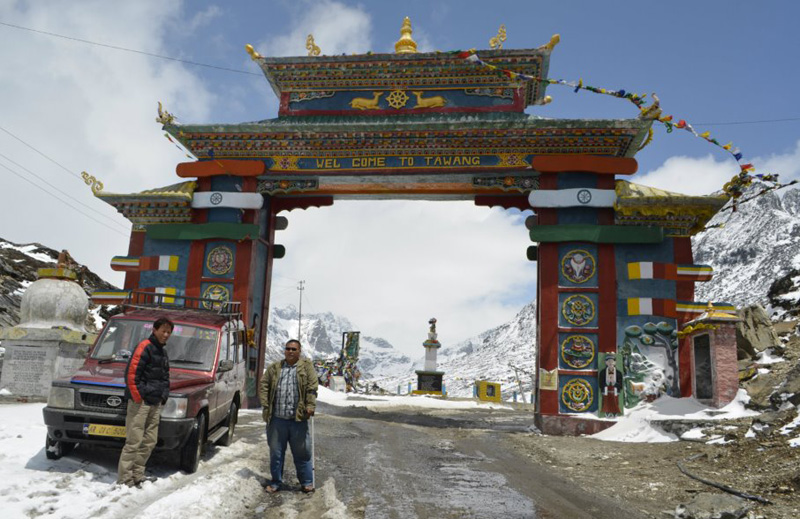 Dharamsala: From his first steps starting out of the Tsuglagkhang Temple Complex in Mcleod Gang on 10 March 2012, Sherab Tsedor has been a man on a mission. With eyes blindfolded to symbolize both the plight of Tibetans inside their own country and the weak response of the international community, the 26-year-old Tibetan activist is on a journey across northern India to generate support and awareness for Tibet.
Dharamsala: From his first steps starting out of the Tsuglagkhang Temple Complex in Mcleod Gang on 10 March 2012, Sherab Tsedor has been a man on a mission. With eyes blindfolded to symbolize both the plight of Tibetans inside their own country and the weak response of the international community, the 26-year-old Tibetan activist is on a journey across northern India to generate support and awareness for Tibet.
Each day from 9 to 5, the Upper T.C.V. and Delhi University graduate marches wearing his blindfold through the streets of a new city or town on a signature drive. Traveling by car with 2 friends through more than 45 communities across Himachal and Arunachal Pradesh so far, he's gathered over 17,000 signatures for a petition urging the People's Republic of China to respect the fundamental human and religious rights of Tibetans and for Beijing to allow an independent fact-finding mission led by international diplomats and media personnel. He plans to visit at least 60 more cities before arriving in New Delhi sometime in July. Once there, he will deliver his petitions to offices of the Indian government, the U.N. and all foreign embassies in the Indian capital.
Tsedor and his collaborators raised roughly 80,000 Rs to fund their signature drive, which has also benefitted from the free use of a friends automobile. Generous support from Indians he's met along the way has also backed his campaign.
In garnering broad support among the Indian and Tibetan communities for the Tibet movement, Tsedor has managed to find a kind of compromise between full Tibetan independence and the Dalai Lama-backed ‘Middle Way.' When asked which he supports, Tsedor told The Tibet Post, ‘I have no particular preference. Tibetans inside Tibet have pushed for three things: the return of the Dalai Lama to Tibet, basic human rights for all Tibetans and full freedom of religion inside Tibet. I demand the same.'
Taking this stance contrasts with another activist who started his own trek on the same day from the same place as Tsedor. Tsetan Dordee set out for Tibet by foot with his mother and sister from Tsuglagkhang Temple Complex on 10 March 2012. His advocacy for the Middle Way, going so far as to carry the Chinese flag on his journey, has attracted the criticism of the Tibetan Youth Congress (http://www.thetibetpost.com/en/news/exile/2512-youth-group-strongly-condemns-tibetans-carrying-chinese-flag).
Still, Tsedor's actions have not always been devoid of controversy. In Delhi on 4 November 2011, Tsedor set fire to himself outside the Chinese embassy to protest human rights violations against Tibetans inside their homeland. He survived with serious injuries to his legs. Reflecting on the effectiveness of the action, Tsedor told The Guardian, ‘I don't know if it has helped the cause of freedom for Tibet, but I hope it's helped send the message.'


![Tibet has a rich history as a sovereign nation until the 1950s when it was invaded by China. [Photo: File]](/images/stories/Pics-2024/March/Tibet-Nation-1940s.jpg#joomlaImage://local-images/stories/Pics-2024/March/Tibet-Nation-1940s.jpg?width=1489&height=878)















